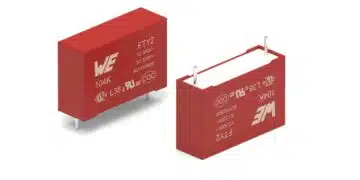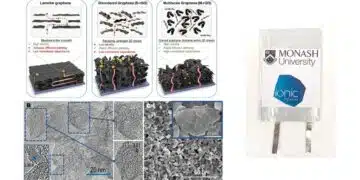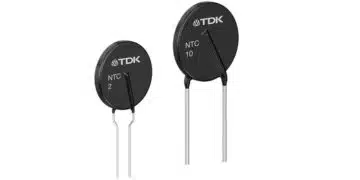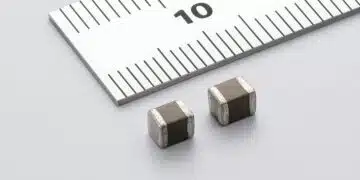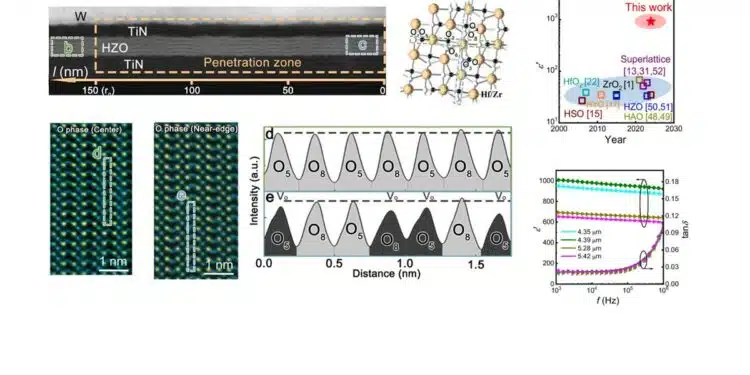Researchers from The HongKong Polytechnic University, China demonstrated ultrahigh dielectric permittivity observed in HfZrO thin-film capacitors published in their article in Nature Communications Journal.
The study highlights the potential of these capacitors for advanced applications in high-density memory and CMOS devices.
The dielectric permittivity reaches a value of 921, with nearly 100% efficiency, achieved through the creation of oxygen vacancies and phase transitions in the material.
This innovation could lead to significant advancements in energy-efficient and high-density electronic devices. Here are the key points from the article on ultrahigh dielectric permittivity in HfZrO thin-film capacitors:
- Objective and Context: The study explores the potential of HfZrO (Hafnium Zirconium Oxide) thin-film capacitors to achieve ultrahigh dielectric permittivity, which is crucial for improved performance in dynamic random access memory (DRAM) and complementary metal-oxide-semiconductor (CMOS) devices.
- Challenges and Innovations: Traditional capacitors face limitations due to low-permittivity interfacial layers, especially in ultrathin films. This study addresses these issues using near-edge plasma treatment and oxygen vacancy engineering to enhance permittivity.
- Results of the Study:
- Achieved a dielectric permittivity of 921 in HfZrO thin films.
- Observed a dramatic change in dielectric properties due to an oxygen vacancy-ordered structure in the polar Pca2₁ phase.
- Enhanced energy storage density of 584 J/cm³ with nearly 100% efficiency.
- Methodology: Utilized atomic-layer deposition (ALD) for fabricating HfZrO thin films and performed structural characterizations, including X-ray photoelectron spectroscopy (XPS) and high-angle annular dark-field scanning transmission electron microscopy (HAADF-STEM).
- Phase Transitions: The study observed a transition from ferroelectric to paraelectric phases, driven by the ordered oxygen vacancies, leading to ultrahigh dielectric permittivity.
- Implications: The findings suggest significant advancements for integrating capacitors into high-density memory and logic devices with low energy consumption, offering potential breakthroughs in semiconductor technology.
- Future Prospects: The study opens avenues for further research into defect engineering and the effects of oxygen vacancies on dielectric properties, aiming to enhance device performance and efficiency at nanoscale levels.
Abstract
The ever-shrinking electrostatic capacitor, which is capable of storing substantial quantities of electrical charge, has found widespread applications in high-storage-density dynamic random access memory and energy-efficient complementary metal-oxide-semiconductor devices. Despite the high energy storage densities (133–152 J/cm3) and efficiencies (75–90%) that have been realized using relaxor ferroelectric dielectric thick films, low-permittivity interfacial layers in the ultrathin films have caused the overall permittivity to be one to two orders of magnitude lower than expected.
However, innovative use of complementary metal-oxide-semiconductor-compatible HfO2-based materials with high permittivities (~52) could enable integration of these capacitors into few-nanometre-scale devices. This study reports an ultrahigh dielectric permittivity of 921, stored charge density of 349 μC/cm2, and energy density of 584 J/cm3 with nearly 100% efficiency within near-edge plasma-treated Hf0.5Zr0.5O2thin-film capacitors when the Hf-based material’s ferroelectricity disappears suddenly after polarization fatigue. The ultrahigh dielectric permittivity originates from a distorted orthorhombic phase with ordered oxygen vacancies that enables high-density integration of extremely scaled logic and memory devices for low-voltage applications.
Summary
In summary, we observed enhanced dielectric permittivity after near-edge ion implantation in amorphous HZO thin-film capacitors. After bipolar high electric-field cycling of a few micron-sized capacitors, the ferroelectricity disappears suddenly between fatigue numbers of 2.02 × 107 and 6.62 × 107 during the generation of a voltage-independent and hysteresis-free ultrahigh ε′ (598–921 at 1 MHz).
High-resolution STEM-iDPC images reveal ordered oxygen vacancies within the principal O-phase grains, forming a new Pca21’ phase that results in the formation of multiple polar regions and contributes to the ultrahigh dielectric permittivity. First-principles calculations consistently demonstrated progressive reduction of the energy barriers for spontaneous and directional O movements and ferroelectric displacements with the involvement of increasing numbers of oxygen vacancies during ordering. The ultrahigh-ε′ transition enables realization of high charge- and energy storage devices and energy-efficient transistors.
Read the full original paper: Zhang, W.D., Song, Z.Z., Tang, S.Q. et al. Ultrahigh dielectric permittivity in Hf0.5Zr0.5O2thin-film capacitors. Nat Commun 16, 2679 (2025). https://doi.org/10.1038/s41467-025-57963-8







